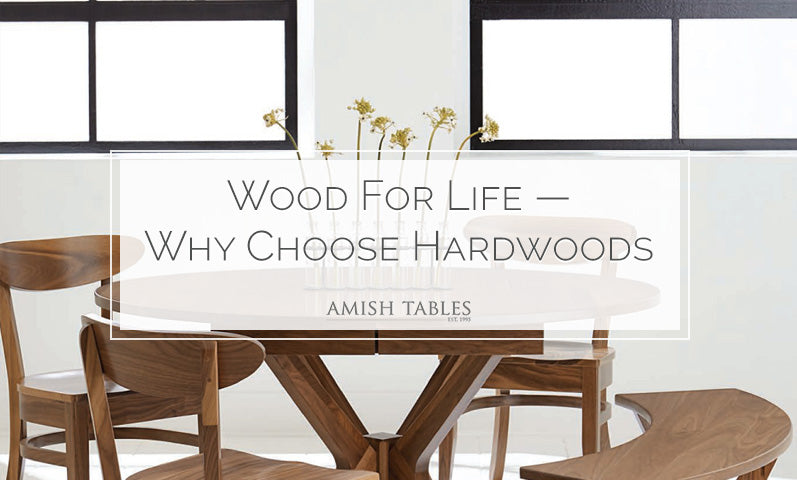
There's nothing quite like a solid, beautifully made piece of furniture – the kind where you can tell, just by looking at it, that it was made by someone who knows the wood, cares for it, understands it, and loves it. Someone who crafts each piece with the knowledge that it will last, long after he is gone, and that families will be enjoying dinners and sharing stories around it for generations to come.
By contrast, there is the functional, mass-produced wooden furniture that serves its purpose – no more, no less. Dining tables and chairs that will be discarded when they inevitably start showing signs of wear, sofas that last only as long as they're in fashion, and beds that creak and groan after just a few short years.
But what makes the difference?
Is it all just about how it's made? Can’t machinery be calibrated to make sure every corner is perfect, every screw tightened optimally, every piece identical to the previous and consistent in quality? This is true – factory-made furniture is made to precise measurements and standards.
However, it's one thing to fix several pieces of fast-grown young pine together with a prescribed minimum of nails, and another thing entirely for a master carpenter to hand-craft a roll-top desk from matured, carefully cured and selected maple, using the right amount of dowels and dovetails to ensure this piece will last centuries.
It all starts with the wood.
It's seemingly common knowledge that hardwood is good wood for furniture – but why is this the case? And is it always true?
In a nutshell, yes.
There are a few softwood exceptions that make good furniture, and a couple of hardwoods that are simply no good, but on average, hardwood is a safer, more consistent bet.
Hardwood is usually superior for furniture making for three reasons:
- Durability
- Appearance
- Resistance to damage
Let's take a look at each of these.
Durability
The durability of hardwood comes from the magic combination of slow growth and high density.
Because hardwood trees take a lot longer to grow to usable size than softwoods, the wood is significantly more mature and well-developed. This, together with hardwood’s incredible density, leads to tough wood that weathers well, withstands temperature and humidity changes better, and becomes better with age.
Softwoods, by contrast, grow fast and are much less dense, leaving you with immature wood that weathers and ages poorly, leading to splits and splinters.
Appearance
Another defining characteristic of hardwoods is their unique grains and the richness of their colors. A trained eye can quickly tell the difference between cherry and cherry-stained pine, just by examining the grain.
Specialist carpenters can easily tell the difference between hardwoods themselves by their grain, even if they have been stained to resemble each other. These woods will keep their unique attractiveness for decades, as a matter of fact, for centuries, if well looked after.
Mass-produced furniture, on the other hand, will quickly fade, the stains becoming uneven, the wood's natural color graying and growing dull. These cheaper, poorer quality woods are frequently stained to color-match your favorite hardwood, so when shopping, make sure to ask exactly what wood it is.
Resistance to damage
Hardwoods are also known for their ability to resist damage, from scratches, scrapes, and dings to spills, stains, and even fires, again because of their maturity, close grain, and dense structure.
The initial damage is bound to be far less than damage sustained by poorer quality woods, taking a whole lot longer to penetrate to the same depths. They are also significantly more resilient, and repairs are much more successful as a result.
Over the next few weeks, we'll take you on a journey to discover:
- How to choose the right hardwood for your furniture,
- What reactions to expect from your wood, depending on your area's climate, and
- How to take care of your hand-crafted hardwood furniture to turn it into an heirloom – a legacy – rather than just another table.
